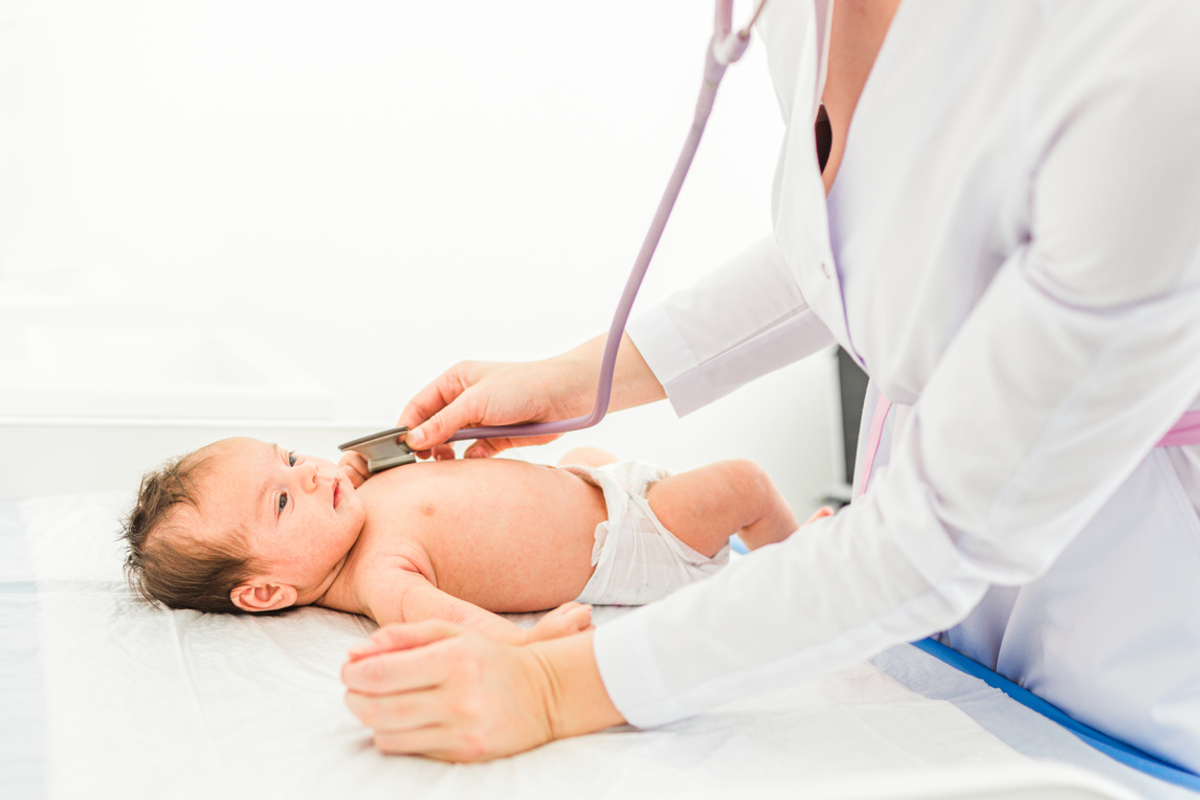Ebstein's anomaly is a congeital disease in which a valve (a structure of the heart that ensures that blood flows in one direction) is not correctly formed, causing blood to leak between chambers of the heart. Ebstein's anomaly is commonly seen among patients with an atrial septal defect, in which patients have a hole in the wall that divides two upper regions of the heart.

What causes Ebstein's anomaly?
As with most heart defects, the cause of Ebstein's anomaly is not identified in most cases, and is likely completely random. Some studies have found that certain factors can increase the risk of Ebstein's anomaly, however. For example, one study found that mothers taking the mood-stabilizer lithium are more likely to have children with Ebstein's anomaly. Therefore, pregnant women currently on lithium are usually referred for a fetal echocardiography, which can help assess the presence of Ebstein's anomaly in the fetus.
What are the symptoms of Ebstein's anomaly?
Symptoms of this heart defect vary depending on the severity of the condition. People with a mild form of Ebstein's anomaly won't usually have symptoms until they are well into adulthood. Once they do, these are the symptoms associated with Ebstein's anomaly:
- Being short of breath, particularly with exercise
- Being fatigued
- Arrhythmia abnormal heart rhythms)
- Heart palpitations
- A bluish tint in the lips and skin due to cyanosis (a condition in which people don’t get enough oxygen)
In extreme cases, in which the defect causes severe damage, symptoms may include:
- Exercise intolerance
- Swelling of the abdomen and lungs
What complications are associated with Ebstein's anomaly?
Fortunately, if you have a mild case of Ebstein's anomaly, you likely won’t experience any complications. However, you should be careful about participating in certain physical activities and talk to your doctor if you want to be a part of competitive sports. You should also be careful if you get pregnant, as pregnancy can put extra strain on your heart. Talk to your doctor about how much monitoring you will need during pregnancy. It will likely depend on how severe your condition is. Some other, rare complications that can develop include heart failure, arrhythmia, sudden cardiac arrest, or a stroke.
How is Ebstein's anomaly diagnosed?
First, your doctor will sit down and help you review the signs and symptoms of your child’s disease. Then, if they suspect a heart defect, they will send you for various tests, some of which include:
- An echocardiogram, which uses sound waves to produce a moving image of the heart. This test offers a detailed view of the heart and any defects it may have.
- An electrocardiogram, better known as an ECG, measures the heart's electrical activity to determine if there are issues with the heart’s structure.
- A chest X-ray to determine whether the heart is enlarged, which can happen in patients with Ebstein's anomaly.
- Cardiac MRI, which uses magnetic fields to create a detailed picture of the heart. This can help assess the condition of the valves.
- Holter monitor, a portable version of an ECG that determines if there any issues with heart rhythm at random times.
- Pulse oximetry, which looks at blood oxygen levels.
- Exercise test, which measures the heart’s ability to respond to physical exertion.
How is Ebstein's anomaly treated?
Treatment for Ebstein's anomaly varies significantly depending on the severity of the defect.
Patients with a very mild defect will usually only need regular monitoring. Routine check-ups can include a variety of tests to make sure the heart is still in working order, such as an exercise test, electrocardiogram, echocardiogram, and a Holter monitor test.
If Ebstein's anomaly is more severe, medications can be used to treat the symptoms of the condition. For example, if you have abnormal heart rhythm, medications can maintain a normal rhythm. Patients may also be given medications for symptoms of heart failure, which can include drugs such as diuretics (which help fight water retention).
Some patients require surgery to correct Ebstein's anomaly:
- Tricuspid valve repair. This is a procedure in which surgeons make the opening of the valve smaller, allowing the valve to come together and function properly. This technique is carried out when there is valve tissue to repair the defect. Sometimes, surgeons may place a band around the valve to help stabilize the repair.
- Tricuspid valve replacement. This surgery is conducted for patients whose existing valve cannot be repaired. Therefore, the surgeon has to replace the damaged valve with an artificial valve. The valves can either made from biological tissue (and are therefore called bioprosthetic) or a be mechanical.
- Closing atrial septal defect. Patients with an atrial septal defect as well as Ebstein's anomoly can have a surgery in which the hole and valve are repaired at the same time.
- A maze procedure is used to correct a fast heart rhythm during a surgery in which the valve is repaired or replaced. Essentially, the surgeon will create scar tissue in the upper part of the heart. Since scar tissue is unable to conduct electricity, your rhythm will slow down.
- Attenhofer Jost, C. H., Connolly, H. M., Dearani, J. A., Edwards, W. D., & Danielson, G. K. (2007). Ebstein’s anomaly. Circulation, 115(2), 277-285.
- Danielson, G. K., Driscoll, D. J., Mair, D. D., Warnes, C. A., & Oliver, J. W. (1992). Operative treatment of Ebstein's anomaly. The Journal of thoracic and cardiovascular surgery, 104(5), 1195-1202.
- Celermajer, D. S., Bull, C., Till, J. A., Cullen, S., Vassillikos, V. P., Sullivan, I. D., ... & Deanfield, J. E. (1994). Ebstein's anomaly: presentation and outcome from fetus to adult. Journal of the American College of Cardiology, 23(1), 170-176.
- Photo courtesy of SteadyHealth


Your thoughts on this